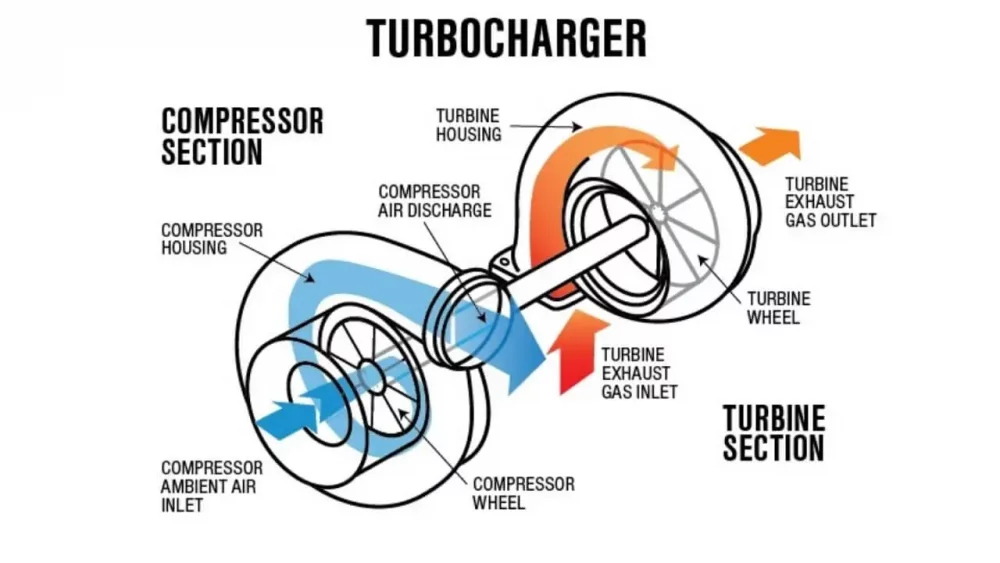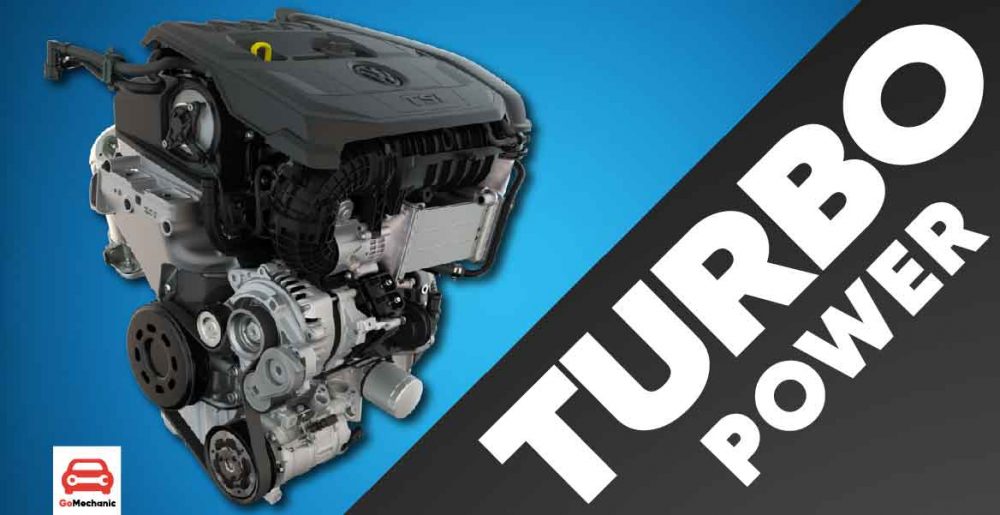Cars are complicated machines. And with growing technology, they become even more complicated, only to offer a better, smoother and smarter experience. While the entire functioning of a vehicle depends on the synergy of several components, the engine is the heart of everything around a car.
Subscribe To The GoMechanic YouTube Channel
This is why the advent of a turbocharger in the engine is a big deal. But with petrol and diesel engines offering turbocharged engines, the question is whether turbocharge technology is the same for both fuels or is there a mark of difference. Here’s the answer
What’s a turbocharger?

At a very basic level, a turbocharger is a component that is fitted onboard a vehicle’s engine that is designed to help improve the performance as well as efficiency. Be it diesel or petrol, the basic way a turbocharger works is the same for both fuels.
A “turbo” comprises two halves bound together by a shaft. The device works in such a way, that the hot exhaust gasses enter from the exhaust gas inlet and spin a turbine, which is connected to another turbine that sucks in air and compresses it into the engine.
This compressed air is what gives an engine an extra oomph of power as well as efficiency, since it allows more air to enter the combustion unit, because the more the air into the engine, the more the power.
Turbo Petrol vs. Turbo-Diesel: The Differences
While the basic structure and functioning for both the petrol as well as diesel turbo remain the same, there still are a few key differences between the two.
The Diesel Turbos

- Diesel when compared to petrol isn’t as combustible in nature. This means that the fuel mix/air inside the combustion chamber needs a higher pressure to ignite as compared to petrol.
- To deal with this high pressure, diesel engines need to be stronger than their petrol engine counterparts, which means they evidently use bigger, heavier components.
- But since heavy and big components are hard to spin at higher speeds, diesel engines usually operate at a much lower RPM band. This means it is difficult for a diesel unit to draw enough air into the combustion chamber.
- But this is where a turbo kicks in. Modern-day diesel turbos are built to increase the airflow to the engine, rather than increasing the inherent combustion pressure; which is already quite high. Thus when it comes to diesel turbochargers, the overall oomph is quite low as compared to petrol turbochargers.
- Moreover, diesel turbochargers also come with a larger turbine section, which can handle a high volume of exhaust gases, at the same time providing enough air intake to keep the cylinders filled.
Also Read: Turbocharged Or Naturally Aspirated | What Indians Want?
The Petrol Turbos

- As a fuel, petrol is more combustible than its diesel counterpart –it ignites easily and burns hotter, meaning that the pressures inside the combustion chambers need not be that high. This means that the components used can be lighter and smaller and that the engine can run at a higher and wider RPM band.
- And since petrol units operate at higher RPMs, the petrol burns at a higher temperature, running hotter than their diesel counterparts. So for a petrol engine, the only aim of a turbo is to increase the engine power by increasing the pressures inside the engine’s combustion chamber.
- This means that petrol turbos are built smaller and lighter and runs at a much higher RPM band, providing a higher boost in pressure. Moreover, since petrol engines operate at a wider RPM band, petrol turbochargers get up to speed faster than their diesel counterparts.
So this was the difference between Petrol and Diesel Turbochargers. Stay Pinned to the GoMechanic blog for everything automotive.
Checkout: The Era of Turbo Petrol Vehicles
Stay Updated With 10 Good Sedans That Died An Untimely Death In The Last Decade [Part 1]






I have been following gomechanic blog for months now and most of their contents are solid. However, this article lacks basic understanding of turbo charger and charge ignition inside a engine and hence misleading in a serious way.
We are thankful for your valuable insights and overall satisfaction with our blog, hopefully, we will make you fully satisfied with our next blog.